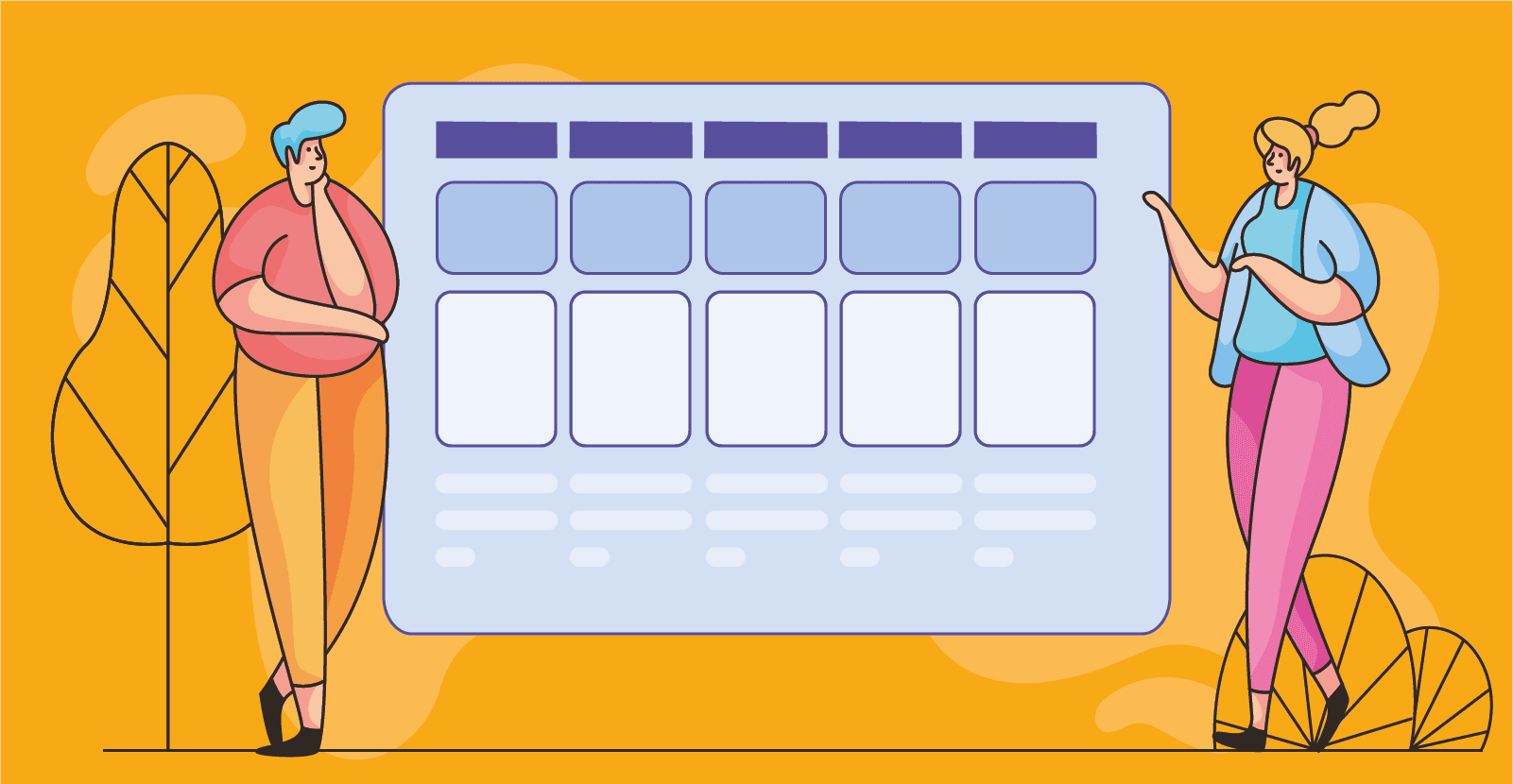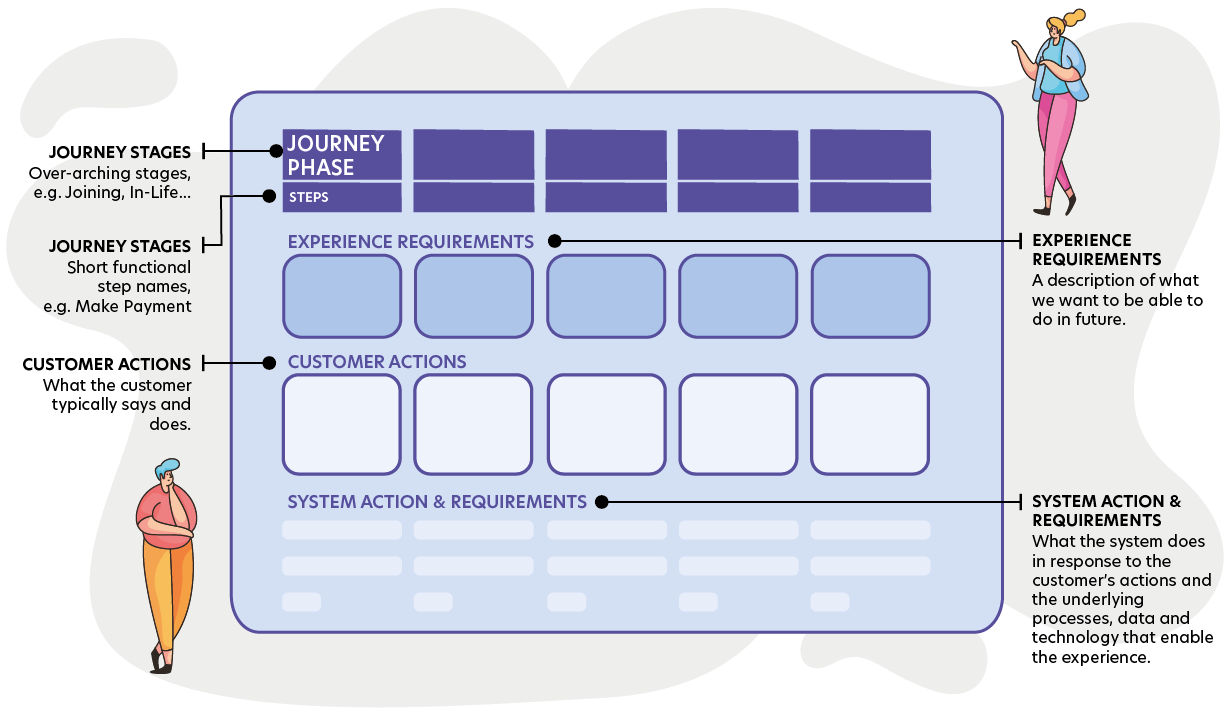Get in touch
5 Ways a company can benefit from a service blueprint

This is the final blog in a the Service Design series, where we explore 5 key tools in the Service Designers Toolkit – Customer Personas, Customer Journey Mapping, Visioning, Concepting and Service Blueprinting.
In this blog, we share how Service Blueprints can be used for service operations and service positioning, as well as diagnosing operational problems. They are extremely useful when planning new services or improving existing ones. They can also help create better performance indicators.
Service blueprints are not roadmaps or programme plans, they are a visual representation of the components and processes relating to touchpoints in a customer journey.
They are often used with target customer journey mapping. They help organisations avoid the costly mistakes that can occur when they lack a comprehensive understanding of their services, resources, and processes.

What is a service blueprint?
First proposed in 1984 by G Lynn Shostack in the Harvard Business Review, service blueprints are seen from the point of view of the customer. They relate to a specific customer journey and the goals associated with that journey. However, they also include all the elements that customers do not see but that apply and need to work together for the service to run seamlessly.
This means that as well as employee actions and technology a customer may personally interact with, the service blueprint will include the relationship that back office, warehouse, delivery operations, and so on, have throughout the process as well. They bring together the target customer journey, concepts, experience requirements, and operational requirements. This makes it clear what needs to be built to enable the target experience.
It is important to note that there can be more than one blueprint for a service if various journeys are possible. Below, we explore how service blueprints are useful for planning new services, and improving existing services.
5 ways service blueprints are useful?
Planning new services:
A service blueprint defines the personnel, processes, systems, and data requirements at each step of the customer journey. It can also help identify what could and should be measured along the customer journey.
Service blueprints create a single, easily understood picture of the service components and how they relate to each other. This helps to provide the consistency and coordination that is essential for delivering a great proposition and experience. This is especially the case when several channels need to work together. Using a service blueprint helps to prevent the various delivery areas from interpreting the target design differently, or only delivering elements that are in their roadmap.
Improving existing services:
Because service blueprints show a map of inter-dependence, they can highlight weaknesses that can lead to poor customer experiences. Once weaknesses have been detected and defined it is much easier to see why things are going wrong and then do something about them.
With a visual map, it is also easier to identify areas where systems, processes, or information could be re-used at other touchpoints in the customer journey to improve the customer experience.
Improving intra-company processes and dialogue:
Service blueprints are particularly useful in services that cross departments. Individual departments and services may not be aware of the impact their actions may have on others. They may not care about the bigger picture as long as their department meets its targets, for example.
The service blueprint creates a shared point of reference. This means better awareness of interdependence and the importance of how working for the greater good can also indirectly benefit them.
It can also help streamline processes:
If two departments meet the same objective in different ways it may become more obvious that they could combine or share resources, for example. The service blueprint can help teams identify what is required to support customer-facing colleagues.
Indicators and requirements:
Key performance indicators and the benefits of implementing requirements can be captured. At the same time, as what needs to happen in each channel and operational area is scoped, new ways to measure the performance of a service against the target experience will become evident.
Next, lets take a look at the key information required for a service blueprint...
The key information required for a service blueprint
- A defined scope of the service or experience mapped out using the key concepts.
- The processes, systems, people, or projects needed for the service.
- The enablers who will deliver the processes, systems, people, or projects as above.
Putting together a service blueprint
A service blueprint can be as diagrammatic and visual as you choose, and the level of detail is also up to you. It tends to have at least four or five layers, levels, or rows: evidence, customer actions/journey, frontstage, backstage, and processes. Time, arrows to indicate relationships and dependencies, and emotions can also be included.
-Evidence: this could mean a website or a store, goods for sale, or credit card receipts, for example. It covers physical elements that come into play during the customer journey and can be frontstage or backstage (see below).
-Customer actions/journey: these are the touchpoints where the customer interacts with the service.
-Frontstage: these are interactions that the customer has with technology, employees, stores, delivery people, and so on. Some frontstage elements will also interact with backstage ones.
-Backstage: these are the processes, actions, and so on that are carried out "behind the scenes" that the customer plays no direct part in. For example, inventory checks, order inputting, quality control, delivery services.
-Processes: these are all the things that need to be done that apply to the customer journey. This could be pricing, delivery of goods to stores, stock control on a website, and so on.
Once you have used your target customer service journey to inform your service blueprint, or vice versa, it can be used to create or improve the customer service journey and experience. Bear in mind that change requirements are developed based on the target experience, and not the other way around.
Using service blueprints will help ensure your customers get the best experience possible, and your organisation continues to thrive.
If you need support creating service blueprints for your organisation, the Engine Service Design team is here to help. Get in Touch and discuss your challenges with one of our Service Design experts.
9 Steps to create a compelling vision
This is the second in a series of 5 Blogs, where we explore 5 key tools in the Service Designers...Four tips for designing beautiful services
1. Understand in detail what your services are made of A beautifully designed service is made up of...Our service with Mercedes-Benz wins industry award!
Engine Service Design worked with Mercedes-Benz to develop an end-to-end service proposition for...Book time with a service design expert.
Discover the transformative power of service design and unlock the full potential of your business. Get in touch with our service design experts today and start improving or innovating your services and customer experience.
